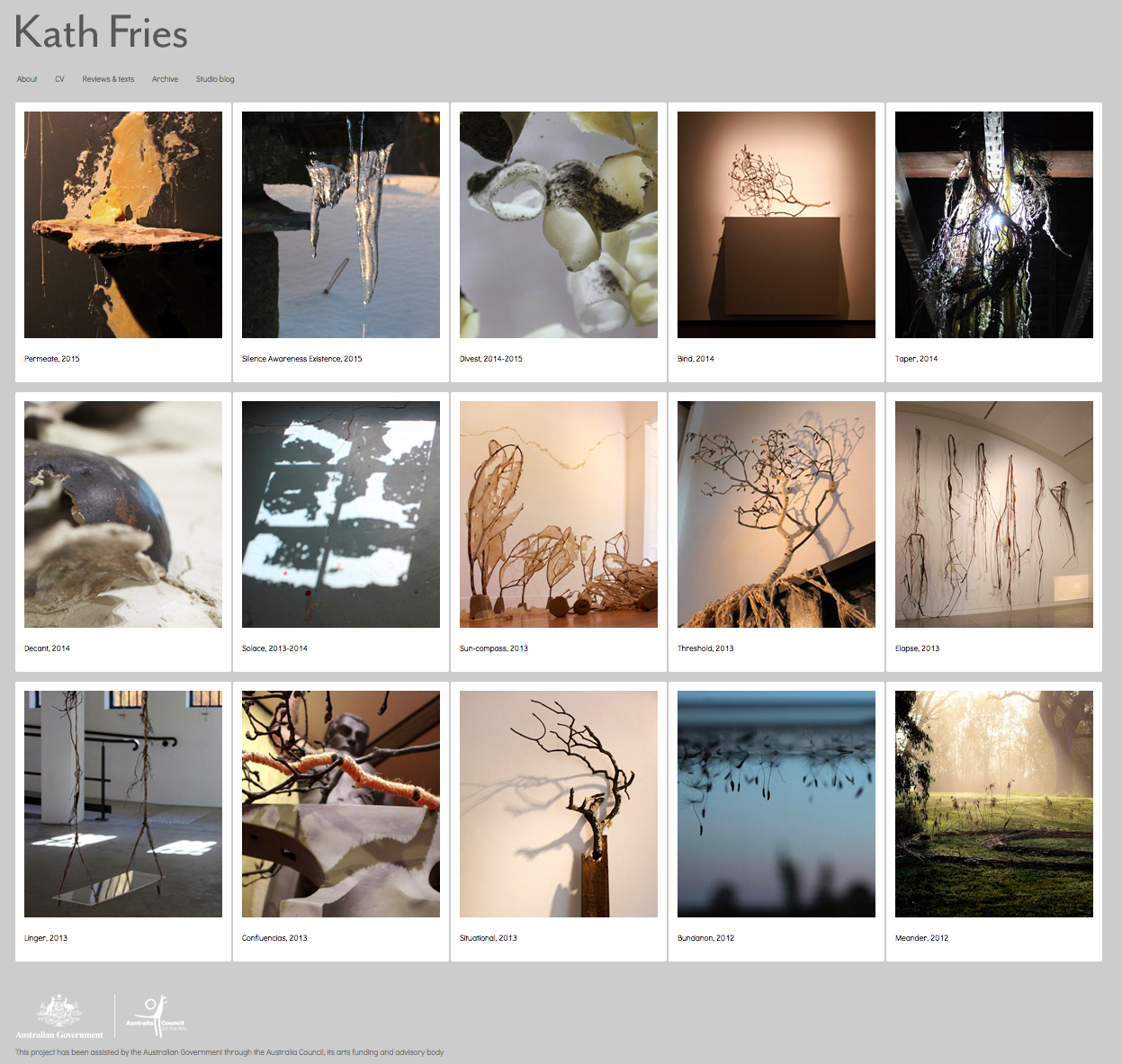 |
| Kath Fries, Divest, 2014, beeswax, ash and wooden pillar, Articulate Project Space, detail view |
As part of the group exhibition Articulate Turns Four: Colour, Form, Line, I'm exhibiting one of my Divest installations. This site-responsive work is made of beeswax and ash, interpreting the exhibition's themes of line and form - as the vertical line of the pillar and the cylindrical forms of the beeswax polyps. This work explores uncontainablity and seeping intersections between artifice and nature.
Beeswax polyp forms cluster within an upright crevice of the gallery, seemingly
seeping outwards to gradually invade the space. These aromatic translucent
shapes suggest embodied presence but their surfaces are smattered with ash,
which in turn conjures a sense of uneasiness, vulnerability and loss.
 |
| Kath Fries, Divest, 2014, beeswax, ash and wooden pillar, Articulate Project Space, 280x30x10cm |
Colour, Form, Line is a theme-based group show curated by William Seeto for the end-of-year annual exhibition titled Articulate Turns Four. The exhibition theme of colour, form and line sets the context by providing a framework that enables discourse, and offers a means of connecting diverse art practices.
Featuring work by: Lisa Andrew, Elizabeth Ashburn, Clementine Barnes, Lynne Barwick, Linden Braye, Brogan Brunt, Sue Callanan, Andy Chi Yau Chan, Shirley Cho, Clara Chung, Vivienne Dadour, Ella Dreyfus, Judith Duquemin, Edwin Easydorchik, Michele Elliott, Nola Farman, Kath Fries, Brigitta Gallaher, Jane Gavan, Beata Geyer, Anne Graham, Veronica Habib, Yvette Hamilton, Laine Hogarty, Adrian Hall, Barbara Halnan, Sahar Hosseinabadi, Tom Issacs, Melissa Maree, Rose Ann McGreevy, Anne Mosey, Christine Myerscough, Jennifer O’Brien, Sue Pedley, Sergio Plata, Jacek Przybyszewski, Christopher Raymond, Margaret Roberts, Marlene Sarroff, Kevin Sheehan, Andrew Simmons, Sardar Sinjawi, Anke Stacker, Paul Sutton, Jane Burton Taylor, Toni Warburton, Gary Warner, Cecilia White, Elke Wohlfahrt, India Zeghan.
Articulate Project Space
497 Parramatta Rd, Leichhardt NSW
Articulate Turns Four: Colour, Form, Line
Curated by William Seeto
Opening event: 19 December, 6-8pm
Open hours: 11am-5pm, 20-28 December
 |
| Kath Fries, Divest, 2014, beeswax, ash and wooden pillar, Articulate Project Space, detail view |












































































%2BWhite%2C%2BBRANCH%2B3d.jpg)














.jpg)














